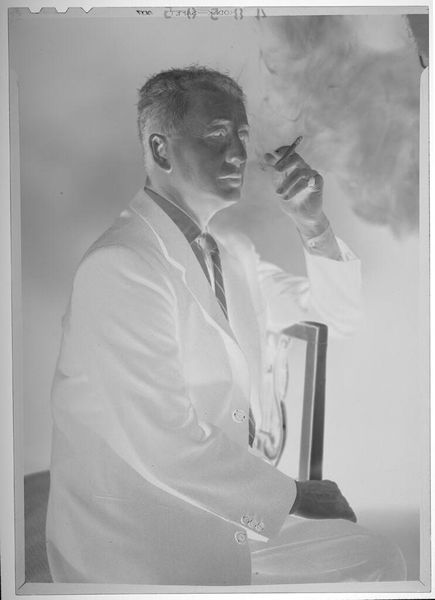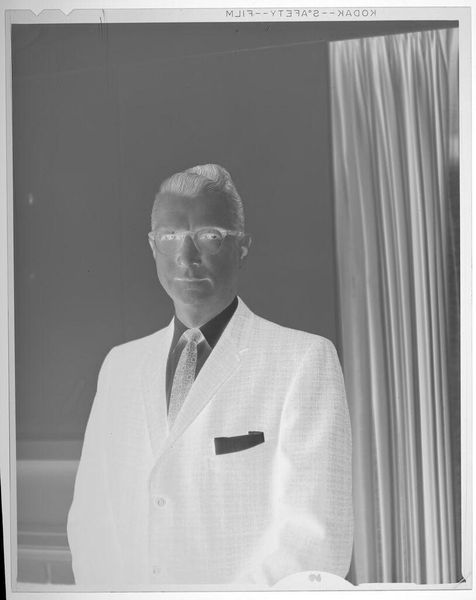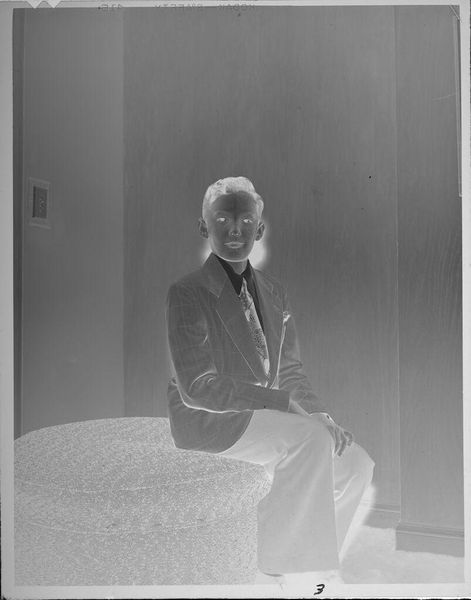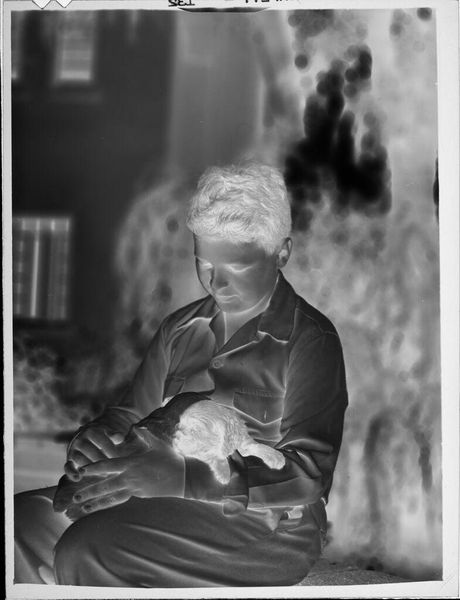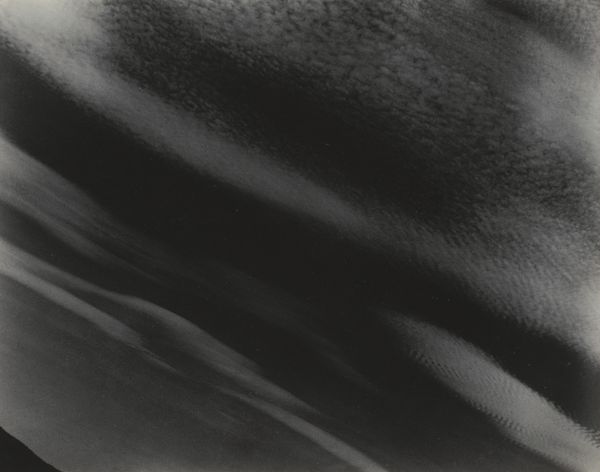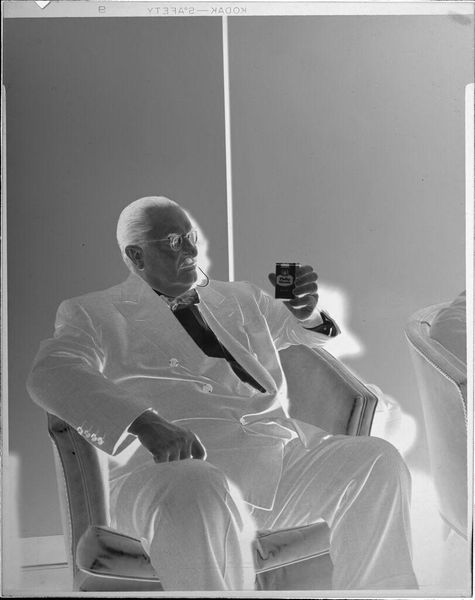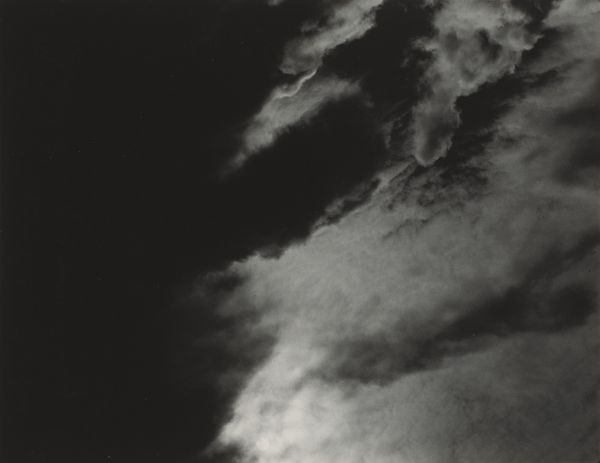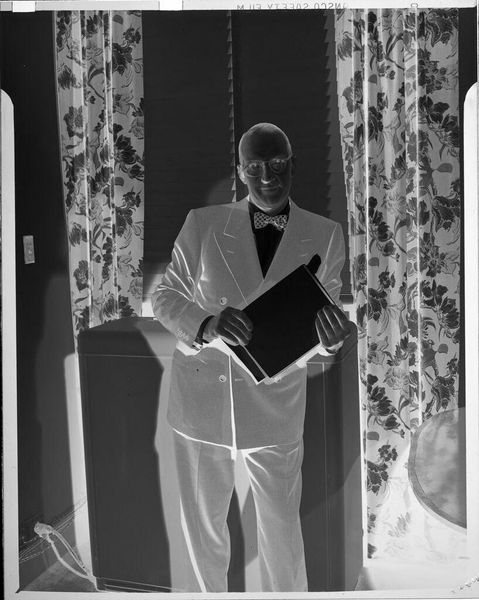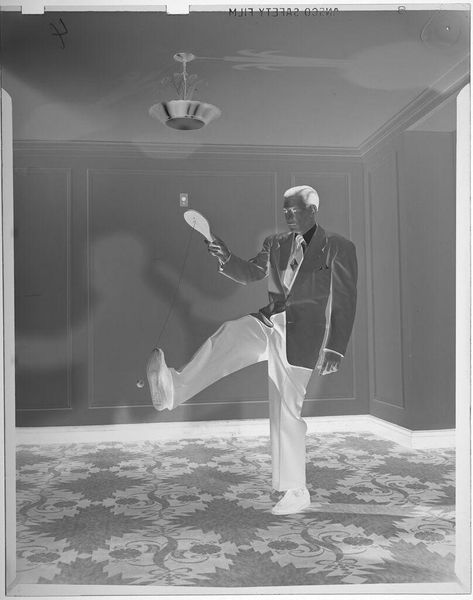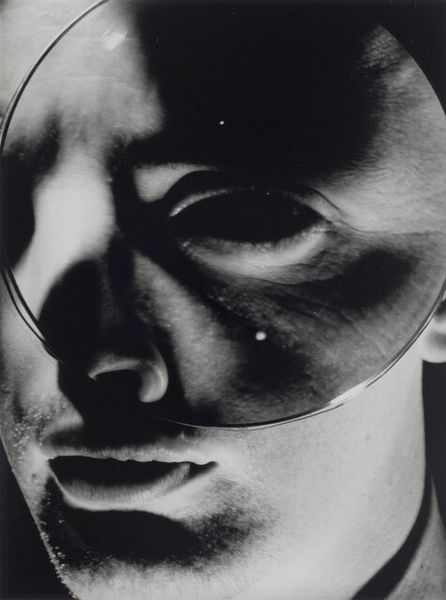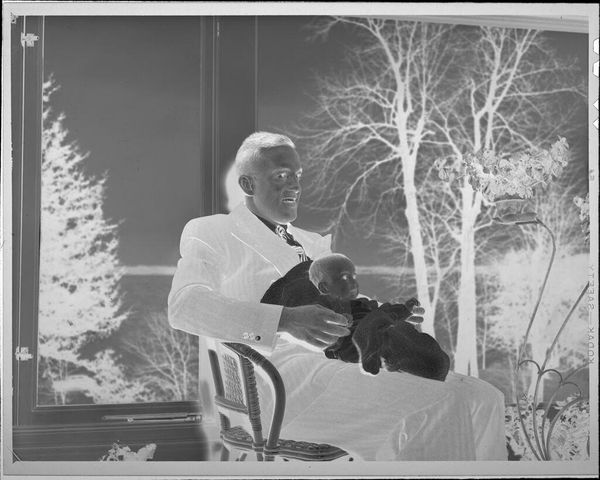
photography
#
portrait image
#
portrait
#
photography
#
male portrait
#
portrait reference
#
portrait head and shoulder
#
black and white
#
portrait drawing
#
facial portrait
#
portrait art
#
monochrome
#
digital portrait
Copyright: Abdul Mati Klarwein,Fair Use
Editor: This is Abdul Mati Klarwein’s portrait of John Fitzgerald Kennedy, created in 1964. It's a black and white work, seemingly a photograph. The background has a dreamy, almost surreal quality. What strikes you about this piece? Curator: Formally, I’m intrigued by the dramatic contrast. Note how the sharp lines of Kennedy's suit juxtapose with the fluid, almost amorphous background. The artist utilizes chiaroscuro to create a sense of depth, yet the ambiguity of the background flattens the picture plane. It’s a deliberate push and pull. Do you see how the artist uses monochrome to distill the subject? Editor: I do. It’s stark, isn’t it? Almost like a study in contrasts—the man versus… everything else? It makes me wonder about the interplay between precision and abstraction. Curator: Precisely. Consider the interplay between texture and line. The artist skillfully manipulates light and shadow to create textural interest within the monochrome palette. The strong verticality, most obviously exemplified in the President's figure, seems almost undermined by the more horizontal bands and waves behind him. It avoids any classical or easily identifiable system. Editor: So, it's more about the formal arrangement and less about the historical or political context, you mean? Curator: While context is always relevant, our focus here remains on the formal language. This aesthetic provides entry points into interpretation. I see it less as about JFK than it is about shape, light, and their relation to the other shapes, and each other. Editor: That’s a perspective I hadn’t considered before. Seeing it purely as shapes in relation allows new interpretations of the composition. Thanks! Curator: A pleasure. Remember to train your eyes as much as your mind to approach art through the material instead of approaching material through preheld conclusions.
Comments
No comments
Be the first to comment and join the conversation on the ultimate creative platform.
